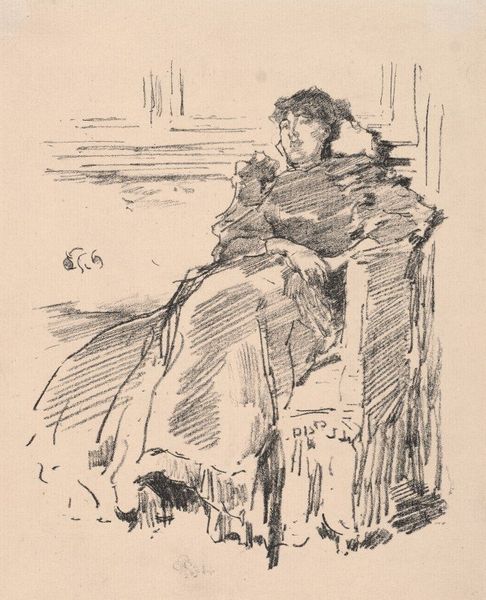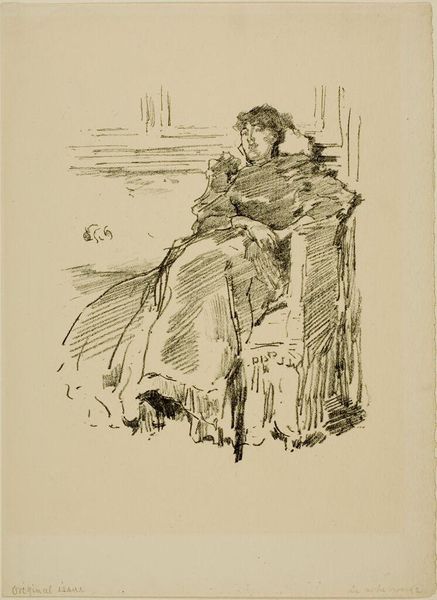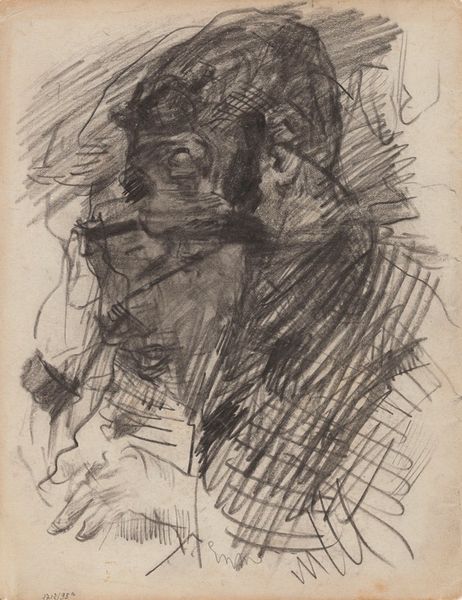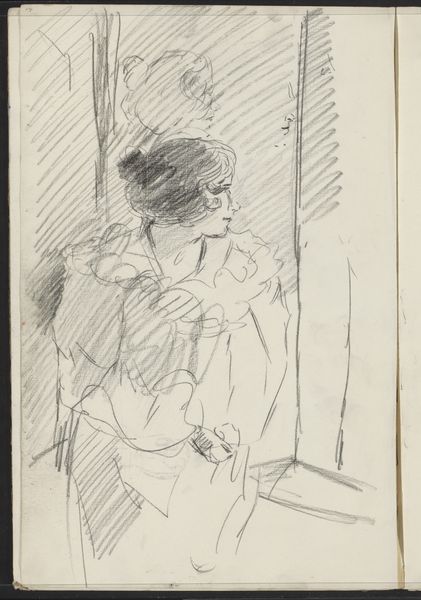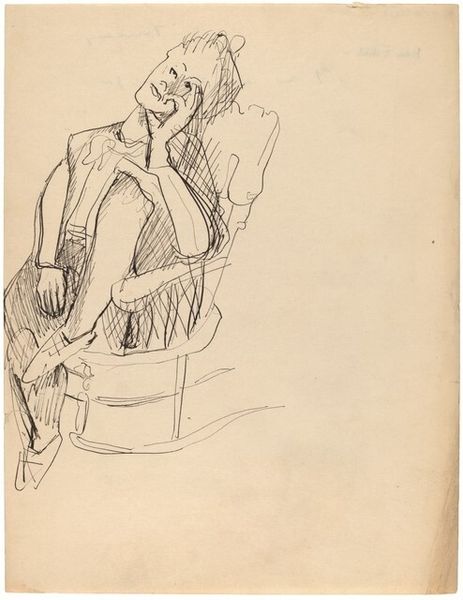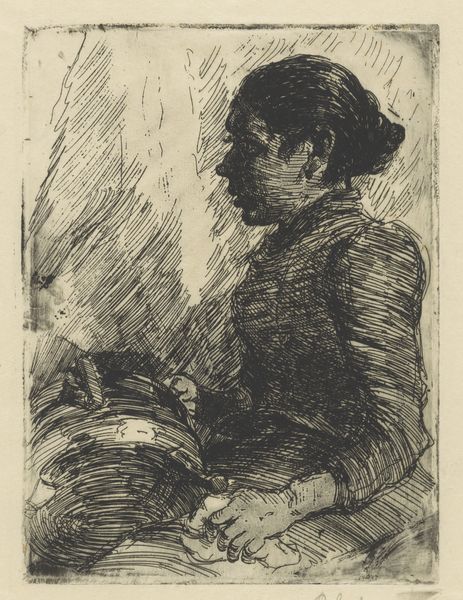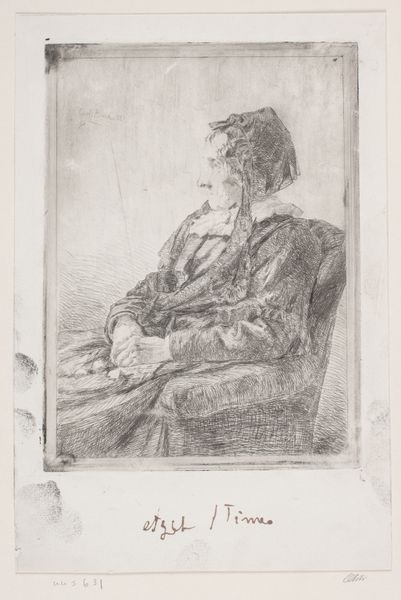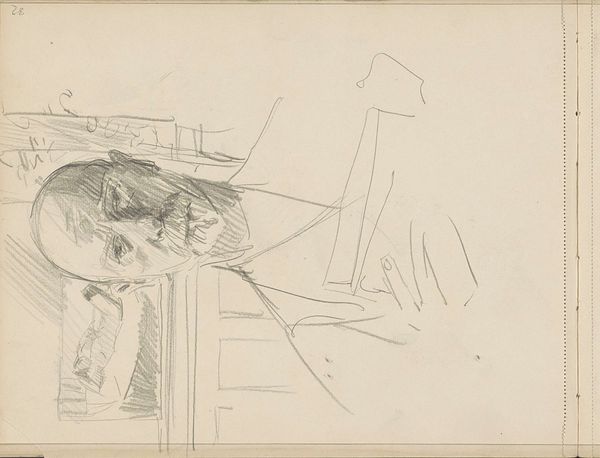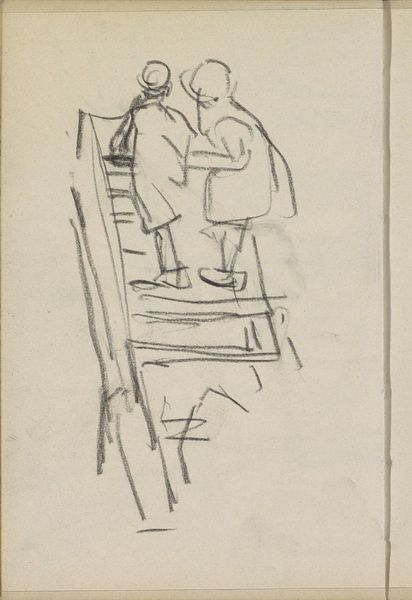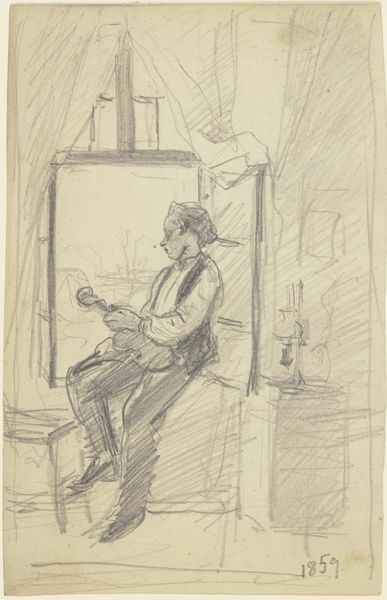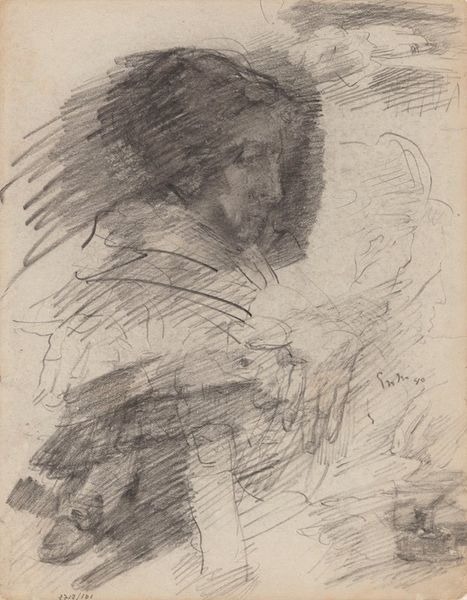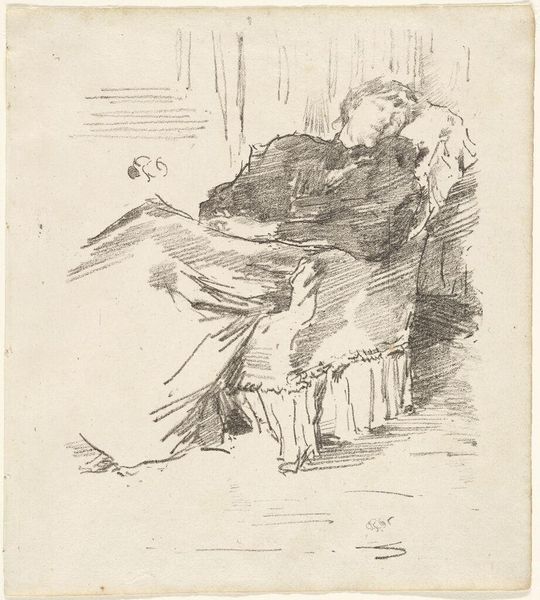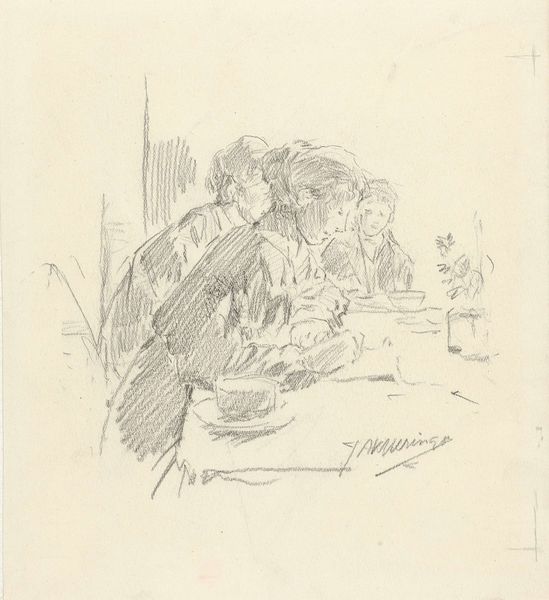
Dimensions: height 246 mm, width 186 mm
Copyright: Rijks Museum: Open Domain
Editor: Here we have James McNeill Whistler’s “Portrait of Walter Sickert,” a pencil drawing from 1895, housed at the Rijksmuseum. It's incredibly delicate. I’m struck by how casually intimate it feels. Whistler has captured Sickert in a seemingly unguarded moment. What stands out to you about this drawing? Curator: Well, considering its context, I see a compelling interplay of artistic egos and the construction of artistic identity. Whistler, already an established figure, portraying Sickert, a younger artist who was both a follower and, in some ways, a rival. Editor: Rival? Curator: Indeed. Look at the way Sickert is presented – seated, but not passively. There's a deliberate pensiveness, perhaps even defiance, in his gaze. Think about the power dynamics at play. Whistler, the established artist, is shaping Sickert's image for the public. How does this portrayal influence Sickert’s budding career, or even their personal relationship? Editor: That’s fascinating! I was just thinking about the immediate impression. But considering that artist-to-artist dynamic completely reframes the artwork. The social context is palpable now. Curator: Precisely! The sketch itself also reinforces an interesting socio-political stance. Impressionism, while seemingly focused on aesthetics, presented ordinary individuals of the middle and lower classes during an era of revolution in France, but the focus also drifted across Europe. In England, the impact of Whistler and Sickert solidified this imagery's role. Editor: So much more to consider than just lines on paper! Thanks! Curator: My pleasure. Remember that every brushstroke—or in this case, pencil stroke—carries cultural weight, influencing our understanding of the artwork.
Comments
No comments
Be the first to comment and join the conversation on the ultimate creative platform.
